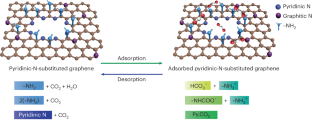2024-06-23 ニューサウスウェールズ大学(UNSW)
<関連情報>
- https://www.unsw.edu.au/newsroom/news/2024/06/new-method-to-degrade-pfas-forever-chemicals-found-effective-in-the-lab
- https://www.sciencedirect.com/science/article/pii/S0043135424007048
可溶性金属ポルフィリン – 分岐したパーおよびポリフルオロアルキル物質(PFAS)の効果的な還元的脱フッ素のためのゼロ価亜鉛システム Soluble metal porphyrins – Zero-valent zinc system for effective reductive defluorination of branched per and polyfluoroalkyl substances (PFASs)
Jun Sun, Tsz Tin Yu, Maryam Mirabediny, Matthew Lee, Adele Jones, Denis M. O’Carroll, Michael J. Manefield, Priyank V. Kumar, Russell Pickford, Zeno Rizqi Ramadhan, Saroj Kumar Bhattacharyya, Björn Åkermark, Biswanath Das, Naresh Kumar
Water Research Available online 19 May 2024
DOI:https://doi.org/10.1016/j.watres.2024.121803
Highlights
- Soluble porphyrin–nZn0 systems have been developed and tested in effective defluorination of PFASs for the first time.
- CoTMpyP-nZn0 system shows 88–164 times higher defluorination rate constants than that reported for VB12-nZn0 system.
- CoTMpyP-nZn0 system demonstrates excellent performance even at room temperature.
- Plausible PFASs reductive defluorination pathways are proposed based on experimental data and DFT calculation.
Abstract
Nano zero-valent metals (nZVMs) have been extensively utilized for decades in the reductive remediation of groundwater contaminated with chlorinated organic compounds, owing to their robust reducing capabilities, simple application, and cost-effectiveness. Nevertheless, there remains a dearth of information regarding the efficient reductive defluorination of linear or branched per- and polyfluoroalkyl substances (PFASs) using nZVMs as reductants, largely due to the absence of appropriate catalysts. In this work, various soluble porphyrin ligands [[meso‑tetra(4-carboxyphenyl)porphyrinato]cobalt(III)]Cl·7H2O (CoTCPP), [[meso‑tetra(4-sulfonatophenyl) porphyrinato]cobalt(III)]·9H2O (CoTPPS), and [[meso‑tetra(4-N-methylpyridyl) porphyrinato]cobalt(II)](I)4·4H2O (CoTMpyP) have been explored for defluorination of PFASs in the presence of the nZn0 as reductant. Among these, the cationic CoTMpyP showed best defluorination efficiencies for br-perfluorooctane sulfonate (PFOS) (94%), br-perfluorooctanoic acid (PFOA) (89%), and 3,7-Perfluorodecanoic acid (PFDA) (60%) after 1 day at 70 °C. The defluorination rate constant of this system (CoTMpyP-nZn0) is 88–164 times higher than the VB12-nZn0 system for the investigated br-PFASs. The CoTMpyP-nZn0 also performed effectively at room temperature (55% for br-PFOS, 55% for br-PFOA and 25% for 3,7-PFDA after 1day), demonstrating the great potential of in-situ application. The effect of various solubilizing substituents, electron transfer flow and corresponding PFASs defluorination pathways in the CoTMpyP-nZn0 system were investigated by both experiments and density functional theory (DFT) calculations.
SYNOPSIS
Due to the unavailability of active catalysts, available information on reductive remediation of PFAS by zero-valent metals (ZVMs) is still inadequate. This study explores the effective defluorination of various branched PFASs using soluble porphyrin-ZVM systems and offers a systematic approach for designing the next generation of catalysts for PFAS remediation.
Graphical abstract




